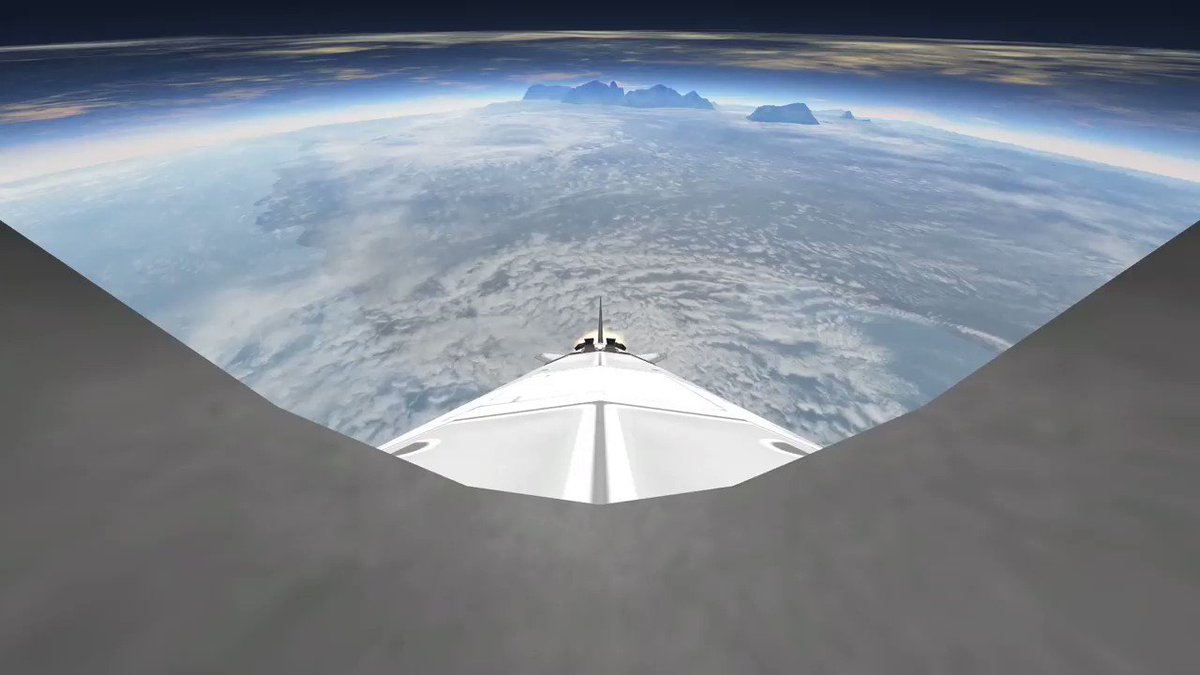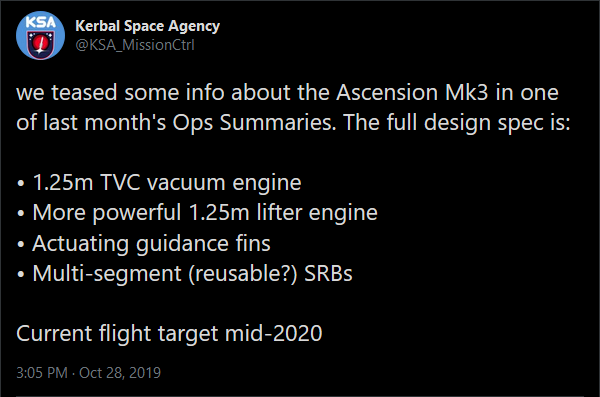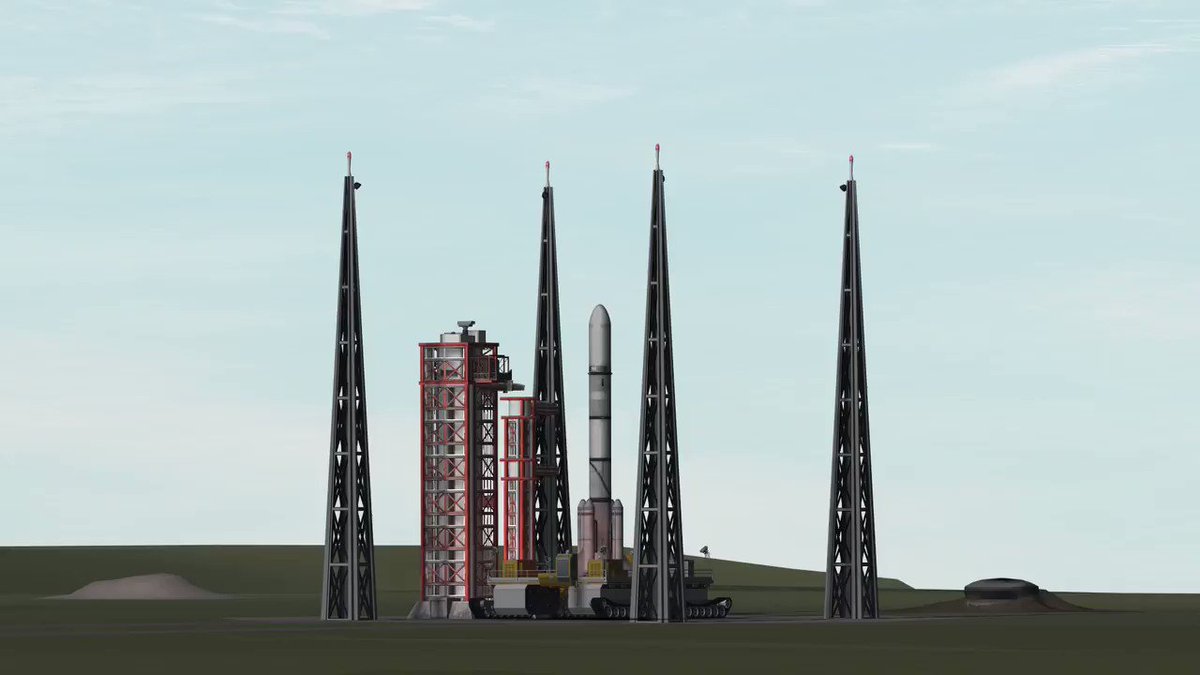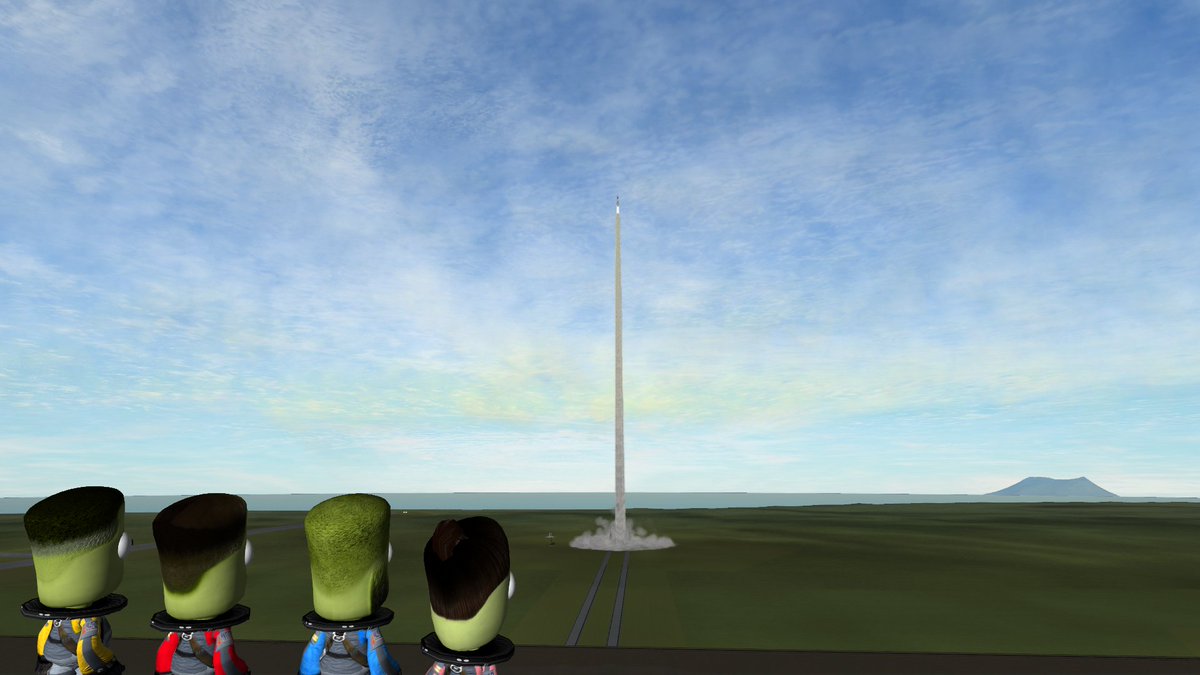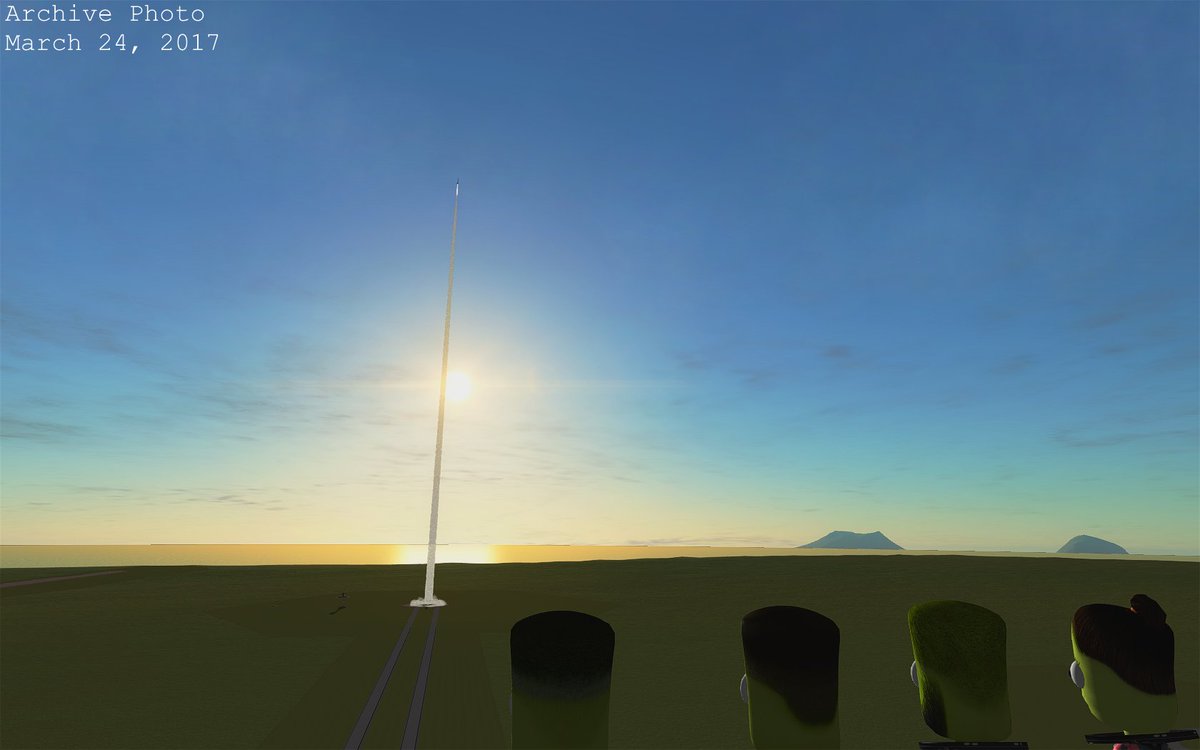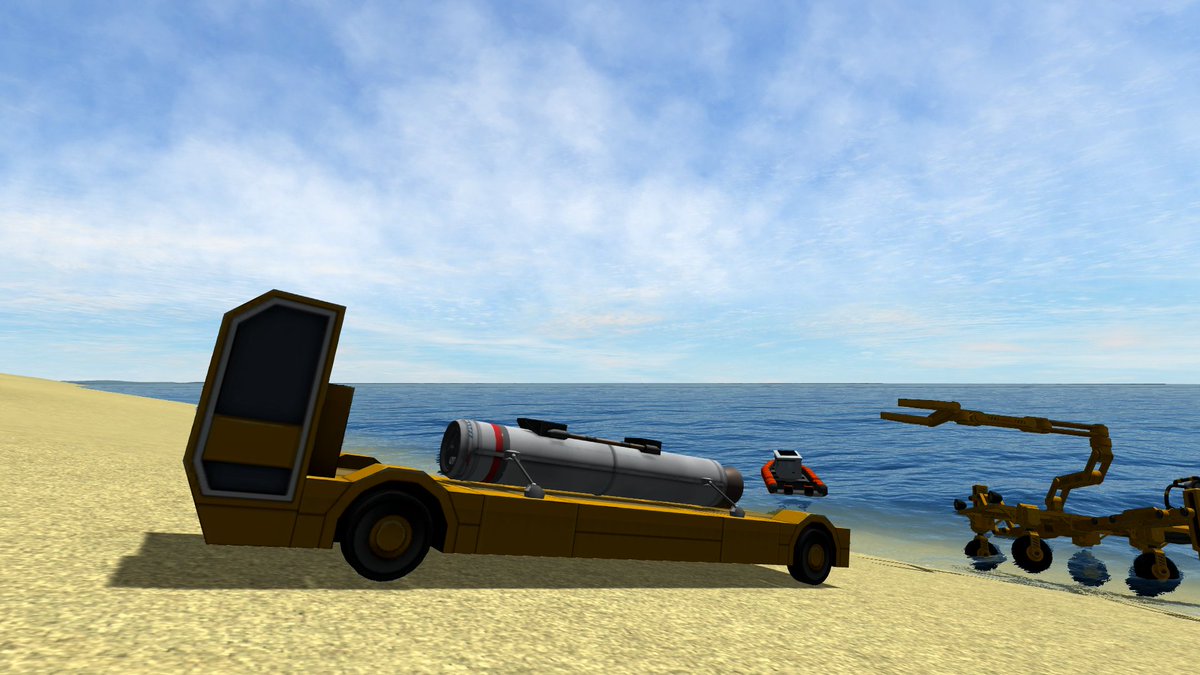|
News Leak IDs Deuce as Missing Aircraft
KNN managed to get their hands on a source from within the Air Safety Administration investigation to reveal this week ahead of any official report that the aircraft was positively identified as the one which went missing this past May, the events of which you can recap in this timeline. We are not directly involved with the investigation beyond supplying the ASA all aircraft debris that was collected on and around the launch pad, so we can only speculate on what this news means. It’s hard not to do so however so here are 3 possibilities that we can think of:
- The aircraft was brought down by force. This seems unlikely since it wouldn’t guarantee the aircraft would be recoverable afterwards, it could easily outdistance an airship carrying weapons, and using another aircraft to force it down at risk of a collision seems even more foolhardy.
- The aircraft crashed due to unrelated causes. Either running out of fuel, total engine failure (also unlikely but possible with improper maintenance) or some other malfunction brought the plane down but the pilot was able to manage a controlled landing. The aircraft was then discovered by bad actors before beneficial search parties could locate it.
- The aircraft flew itself out to the Great Desert. The flight crew may have been complicit from the start and handed the plane over to the religious radicals to be used for whatever was seen as necessary.
All of these require that the exiled kerbs somehow have a means of communicating outside of their region, with some sort of local support network in place here in the populated region that has gone undiscovered since the original round up and banishment. We can only hope that law enforcement is hot on their tails now that they we know they must exist (recall one of them was on hand to film the attack at KSC).
Whether one of our scenarios is correct, partly correct or none of them are on target, we won’t know until the ASA releases their final report.
Ascension Launches to Resume in 2020
Assessment of the launch pad and service structures damaged in the attack during the recent Ascension mission was completed this week. While the concussive force and heat of the initial explosion did significant damage to the service structures, they have been found to remain structurally intact. The crew tower was partially shielded by the service towers and received only minor damage. There is mostly a lot of wiring and piping to replace in the service towers that was either melted or warped, and the swing arm that was attached to the rocket needs to be fully replaced. The swing arm of the upper service tower will need repairing as it was forced back beyond its swing limit, damaging its movement. The pad surface was cracked in numerous places then buckled under the heat of the fuel fire that burned on top of it. It will need to be completely broken up and resurfaced. Lead Engineer Simon has been talking to contractors and says repairs should be completed by the end of the year.
If we are good to go at the start of 2020, the first launch will have to be the unkerbed Mk1, which is the pathfinder for the Mk2 since it will test the larger guidance fins that the Mk2 will rely on to fly its shallow ascent trajectory into orbit. If the Mk1 mission is successful, we will target a launch of the Mk2 in February. Captain Jebediah has retained his position in the crew rotation with no argument from Specialist Bob and will get another chance to head up to space in either late February or early March, as the next engine shipment we could use for his rocket would arrive in late January.
Speaking of which, the final K2-X engine delivered for 2019 was static-fired this week and will be the one to mate with the Mk2 lifter.
Genesis Tests New Meteorological Equipment
Jeb and Commander Valentina took a break from Ascension duties to take the Deuce out for a science mission this week that tested a new suite of atmospheric instruments exposed to the air, mounted under the wings. The mission was to ensure the new sensor pods would not disturb the aircraft’s flight characteristics and collect data meteorologists could analyze to determine if such information could be useful in better understanding weather events like strong storms. Everything went well until Val began to descend from 8km ASL and was unable to throttle back due to frozen cables from flying at high altitude for the majority of the mission. Once lower into warmer air she finally was able to feel the throttle levers give but then pulled back too hard and snapped them both, locking the throttle at around 68%.
After declaring an emergency the crew began to work out how they would make their approach and landing, preferring not to just shut the engines down and glide in without power. While using reverse thrust at flight speeds is not a common procedure, it is possible and with Jeb engaging/disengaging reverse thrust on Val’s command so she could keep both hands on the yoke they worked out how effective it would be as speed control. They both agreed it felt good and made a normal pattern approach and landing, shutting down the engines after touchdown to allow them to use the wheel brakes to come to a complete stop. The Deuce was tugged back into the HAB for a full control cable replacement and better sealing so water doesn’t get into the lines again to both freeze and corrode them.
In other Genesis news, the second Dhumla was completed and a flight crew from C7 Aerospace conducted ground trials to confirm it was properly built. We loaded it up with cargo for the first time and sent it off to the Kongo base, where it will continue flight testing and development under sole oversight of C7.
Progeny Mk7-B New Design Details
Two new design aspects of the next Progeny Mk7 iteration were revealed this week, the first being that inline parachutes are being developed to stack between the top of the multi-segment lower booster and the decoupler to the second stage. The new booster will be recovered initially just to run post-flight analysis but if the condition of the casing appears to be good, we could potentially pack solid fuel back into it for another launch and see how it performs. If things work out, this could lead to reusable boosters for the Ascension Mk3 as well.
The other new feature is making use of the surplus of radial Main Command Units which aren’t powerful enough on their own to control a rocket but can provide backup computations during ascent to correct any errors the main flight computer may encounter. This level of fault tolerance was originally supposed to have debuted already with the Ascension Mk2’s dual flight computers, which will be more capable at recovering from computer issues but having even minor fault tolerance on the Progeny Mk7 could mean the difference between success and failure on some missions. Plus the only other use for the old MCUs right now is controlling KerBalloons.
While the new Mk7 will not launch until next year, the 4 Mk6-I rockets that will close out this year are all progressing well in their build process in the VAB. The rocket for next week’s launch has begun its final closeouts and should be ready for rollout next Tuesday on schedule.
ATN Database
The latest update for the Asteroid Tracking Network database is available here, containing 4,296 asteroids and 4 updated with new observation data. Here are the 30 asteroids that were discovered this past week.
 |
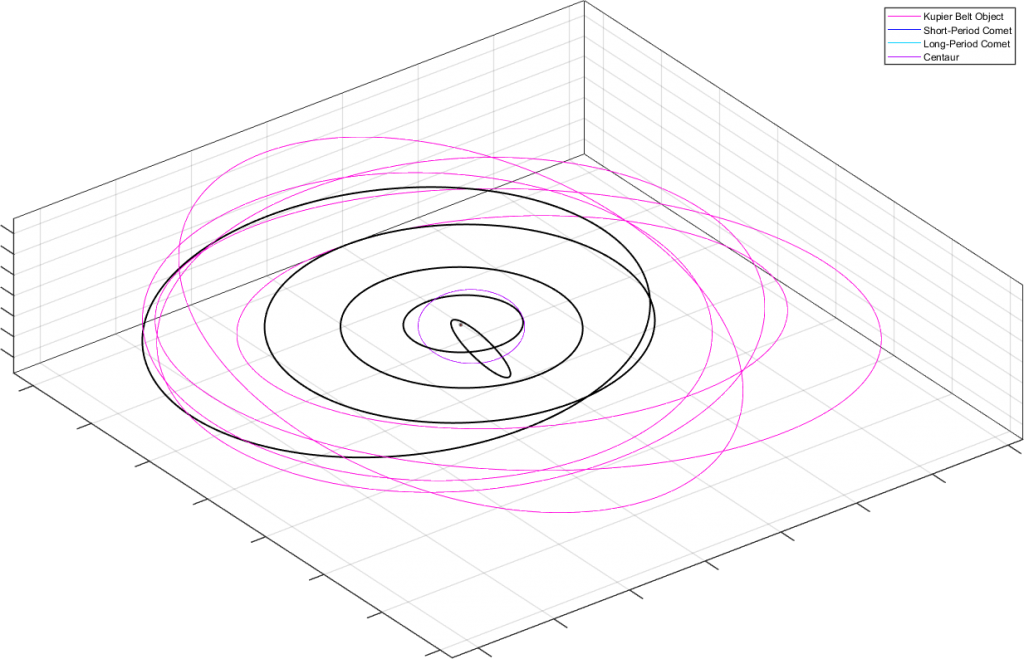 |
From the Desk of Drew Kerman
Out of Character Behind the Scenes stuffWritten on 10/30/19
Yep, more orbital delays
I’d apologize, but I’m really not sorry. Pushing orbit back to early 2020 gives me more time to work on the orbital features of the Ops Tracker after I do yet another refactor of the code base. This version of the Ops Tracker is my first use of AJAX loading, which is asynchronous, as well as dealing with volatile data that can be updated only bits at a time while the page is still loaded rather than always all at once when the entire page is refreshed. So I want to streamline the loading process so that I don’t have to tell some functions to call themselves over and over while waiting for data they need to load and the various data structures I’m using to store all the loaded data could be better combined for easier debugging, better performance and future feature additions – like orbital trajectory support.
Also, I need to finally take time to update KSP. I’m still on v1.5.1 and the latest v1.8.1 is a significant change – new Unity, default DX11 support and new .NET – so only the mods that make it past this point will be usable going forwards. It’s looking like pretty much everything I need will continue to be usable, but I certainly don’t mind giving Orbital Decay a few more months to hopefully pick up a new maintainer. Also there’s the fact that Kerbalism will no longer support RemoteTech for the foreseeable future and I need time to see if going back to CommNet support with that and kOS is something I want to deal with.
Also also I need more additional free time to upgrade the KSA website, which is now running an embarrassingly outdated WordPress version and I don’t know how badly the update will break the site.
Delays in overall progress do kinda suck but I would like to remind everyone that KSP only continues to improve with time. It still receives full support from the developers even with KSP 2 on the horizon and ultimately the more I put things off the more opportunities I have in the game.
Deuce throttle problems
Yea so what really happened is I was bored, cause flying the plane doesn’t really take much attention, and so I was fiddling with the joystick cables and the one for my Saitek X55 throttle came loose and lost connection. Although I jiggled it back in, the game no longer recognized that I had a throttle plugged in. Or maybe it did and it just wasn’t functioning properly, because for some reason I couldn’t press X to cut throttle and pressing Ctrl only lowered the throttle to 68%. So I was legit actually toggling the reverse thrusters on and off to control my speed.
And to clear up any misunderstanding of using reverse thrusters during normal flight operations, what’s really happening here is the propeller blades are being rotated around so they are forcing air in the opposite direction. The entire drive shaft is not being reversed to spin in the opposite direction.
I did some quick research and found that water can get in cable lines, freeze and corrode them. Perfect! I had no plans for any trouble so this turned an otherwise boring routine mission into something worth writing about. Love how that happens sometimes. Spontaneous plot!
Of course the actual landing did not go as smoothly as I wrote it out to be, but thankfully some helpful advice in the replies below made future mission landings more tolerable.
I will also admit that the science gains that will be reported in the financial statement for Nov related to these missions is entirely made up. The instruments are indeed new, but they use the same old temperature, barometer, etc experiments I’ve already dried up. So, I still wanted some science gain to come from this but made it minimal since the type of experiment was the same but the execution and goal of gathering it was different.









